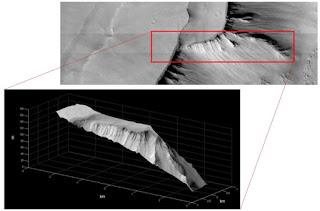

| Online: | |
| Visits: | |
| Stories: |
ExoMars orbiter sends stunning images back to earth!
ESA’s new ExoMars orbiter has tested its suite of instruments in orbit for the first time, hinting at a great potential for future observations.
The Trace Gas Orbiter, or TGO, a joint endeavour between ESA and Roscosmos, arrived at Mars on 19 October. Its elliptical orbit takes it from 230–310 km above the surface to around 98 000 km every 4.2 days.
It spent the last two orbits during 20–28 November testing its four science instruments for the first time since arrival, and making important calibration measurements.
Data from the first orbit has been made available for this release to illustrate the range of observations to be expected once the craft arrives into its near-circular 400 km-altitude orbit late next year.
TGO’s main goal is to make a detailed inventory of rare gases that make up less than 1% of the atmosphere’s volume, including methane, water vapour, nitrogen dioxide and acetylene.
Of high interest is methane, which on Earth is produced primarily by biological activity, and to a smaller extent by geological processes such as some hydrothermal reactions.
Video + full article at:
http://news-uncensored-fresh.blogspot.be/2016/11/exomars-orbiter-sends-stunning-images.html




